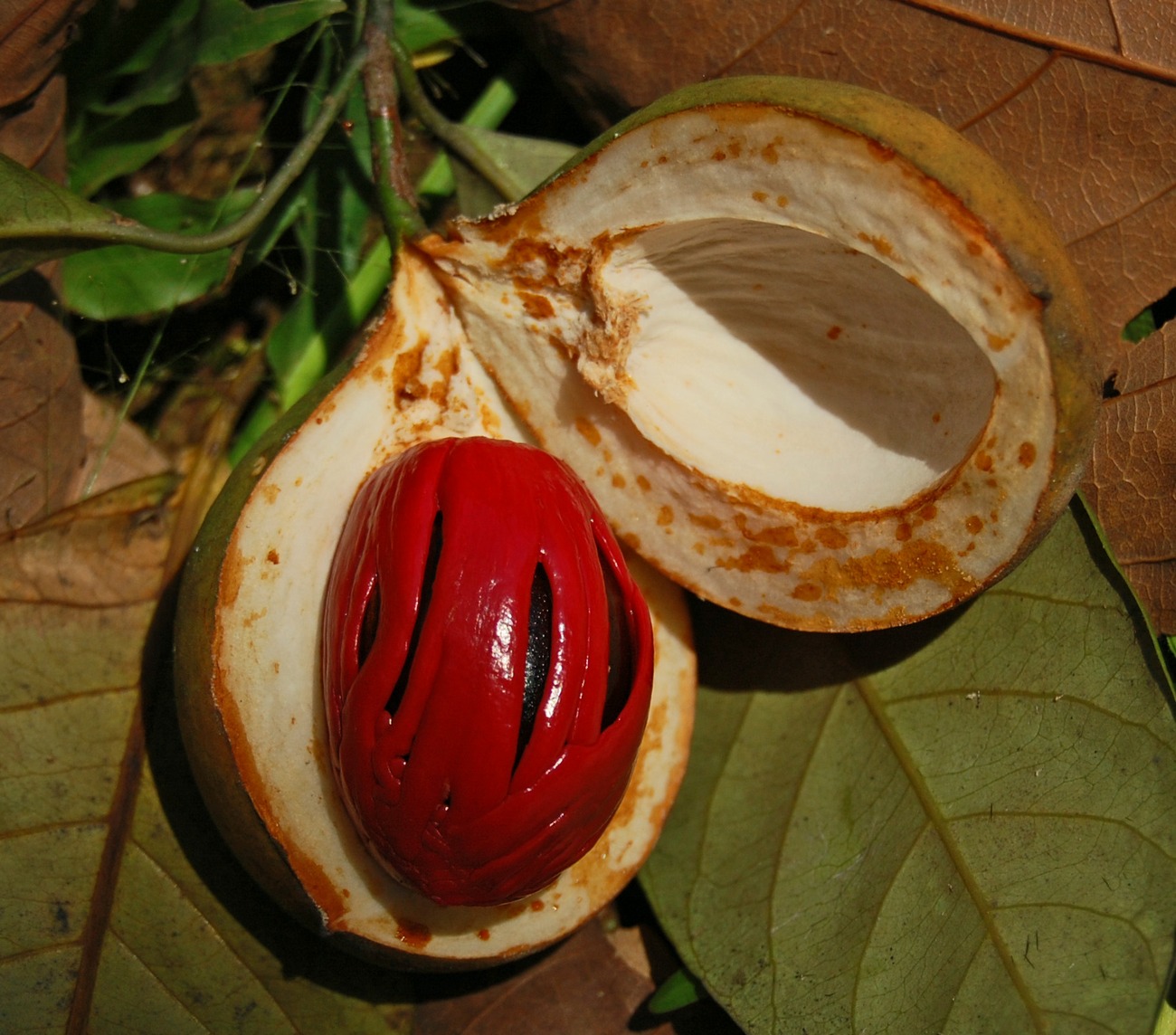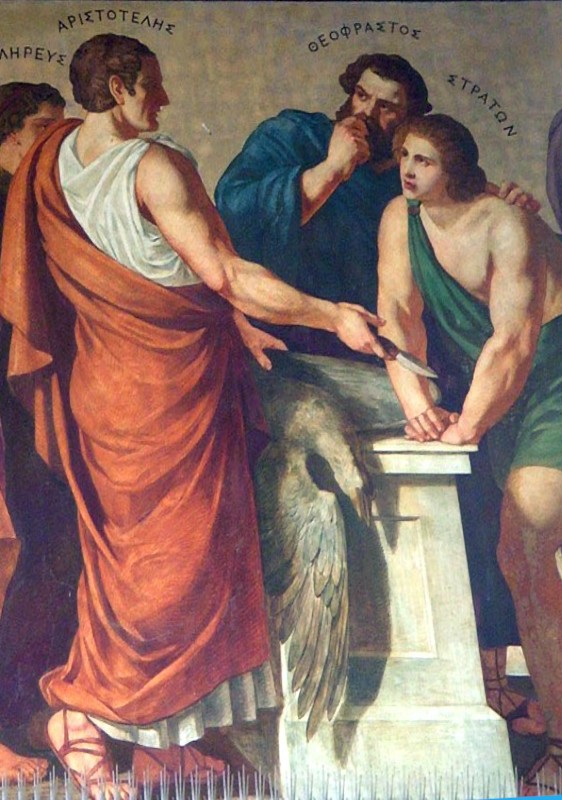|
Synantherology
Synantherology is a branch of botany that deals with the study of the plant family Asteraceae (also called Compositae). The name of the field refers to the fused anthers possessed by members of the family, and recalls an old French name, ''synantherées'', for the family. Although many of the plants of the Asteraceae were described for the European community at least as long ago as Theophrastus, an organization of the family into tribes, which remained largely stable throughout the 20th century, was published in 1873 by George Bentham. In a 1970 article titled "The New Synantherology", Harold E. Robinson advocated greater attention to microstructures (studied with the compound light microscope). He was not the first, as Alexandre de Cassini and others of the 19th century split species based on fine distinctions of microstructure, a tendency which Bentham found excessive. Noted United States synantherologists include:{{citation needed, date=February 2021 * T. M. Barkley * ... [...More Info...] [...Related Items...] OR: [Wikipedia] [Google] [Baidu] |
Botany
Botany, also called plant science (or plant sciences), plant biology or phytology, is the science of plant life and a branch of biology. A botanist, plant scientist or phytologist is a scientist who specialises in this field. The term "botany" comes from the Ancient Greek word (') meaning " pasture", "herbs" " grass", or "fodder"; is in turn derived from (), "to feed" or "to graze". Traditionally, botany has also included the study of fungi and algae by mycologists and phycologists respectively, with the study of these three groups of organisms remaining within the sphere of interest of the International Botanical Congress. Nowadays, botanists (in the strict sense) study approximately 410,000 species of land plants of which some 391,000 species are vascular plants (including approximately 369,000 species of flowering plants), and approximately 20,000 are bryophytes. Botany originated in prehistory as herbalism with the efforts of early humans to identify – a ... [...More Info...] [...Related Items...] OR: [Wikipedia] [Google] [Baidu] |
Asteraceae
The family Asteraceae, alternatively Compositae, consists of over 32,000 known species of flowering plants in over 1,900 genera within the order Asterales. Commonly referred to as the aster, daisy, composite, or sunflower family, Compositae were first described in the year 1740. The number of species in Asteraceae is rivaled only by the Orchidaceae, and which is the larger family is unclear as the quantity of extant species in each family is unknown. Most species of Asteraceae are annual, biennial, or perennial herbaceous plants, but there are also shrubs, vines, and trees. The family has a widespread distribution, from subpolar to tropical regions in a wide variety of habitats. Most occur in hot desert and cold or hot semi-desert climates, and they are found on every continent but Antarctica. The primary common characteristic is the existence of sometimes hundreds of tiny individual florets which are held together by protective involucres in flower heads, or more t ... [...More Info...] [...Related Items...] OR: [Wikipedia] [Google] [Baidu] |
Compositae
The family Asteraceae, alternatively Compositae, consists of over 32,000 known species of flowering plants in over 1,900 genera within the order Asterales. Commonly referred to as the aster, daisy, composite, or sunflower family, Compositae were first described in the year 1740. The number of species in Asteraceae is rivaled only by the Orchidaceae, and which is the larger family is unclear as the quantity of extant species in each family is unknown. Most species of Asteraceae are annual, biennial, or perennial herbaceous plants, but there are also shrubs, vines, and trees. The family has a widespread distribution, from subpolar to tropical regions in a wide variety of habitats. Most occur in hot desert and cold or hot semi-desert climates, and they are found on every continent but Antarctica. The primary common characteristic is the existence of sometimes hundreds of tiny individual florets which are held together by protective involucres in flower heads, or more technically, ... [...More Info...] [...Related Items...] OR: [Wikipedia] [Google] [Baidu] |
Anther
The stamen ( plural ''stamina'' or ''stamens'') is the pollen-producing reproductive organ of a flower. Collectively the stamens form the androecium., p. 10 Morphology and terminology A stamen typically consists of a stalk called the filament and an anther which contains '' microsporangia''. Most commonly anthers are two-lobed and are attached to the filament either at the base or in the middle area of the anther. The sterile tissue between the lobes is called the connective, an extension of the filament containing conducting strands. It can be seen as an extension on the dorsal side of the anther. A pollen grain develops from a microspore in the microsporangium and contains the male gametophyte. The stamens in a flower are collectively called the androecium. The androecium can consist of as few as one-half stamen (i.e. a single locule) as in ''Canna'' species or as many as 3,482 stamens which have been counted in the saguaro (''Carnegiea gigantea''). The androecium in ... [...More Info...] [...Related Items...] OR: [Wikipedia] [Google] [Baidu] |
Theophrastus
Theophrastus (; grc-gre, Θεόφραστος ; c. 371c. 287 BC), a Greek philosopher and the successor to Aristotle in the Peripatetic school. He was a native of Eresos in Lesbos.Gavin Hardy and Laurence Totelin, ''Ancient Botany'', Routledge, 2015, p. 8. His given name was Tyrtamus (); his nickname (or 'godly phrased') was given by Aristotle, his teacher, for his "divine style of expression". He came to Athens at a young age and initially studied in Plato's school. After Plato's death, he attached himself to Aristotle who took to Theophrastus in his writings. When Aristotle fled Athens, Theophrastus took over as head of the Lyceum. Theophrastus presided over the Peripatetic school for thirty-six years, during which time the school flourished greatly. He is often considered the father of botany for his works on plants. After his death, the Athenians honoured him with a public funeral. His successor as head of the school was Strato of Lampsacus. The interests of Theophr ... [...More Info...] [...Related Items...] OR: [Wikipedia] [Google] [Baidu] |
Tribe (biology)
In biology, a tribe is a taxonomic rank above genus, but below family (biology), family and subfamily. It is sometimes subdivided into subtribes. By convention, all taxonomic ranks from genus upwards are capitalized, including both tribe and subtribe. In zoology, the standard ending for the name of a zoological tribe is "-ini". Examples include the tribes Goat-antelope#Tribe Caprini, Caprini (goat-antelopes), Hominini (hominins), Bombini (bumblebees), and Thunnini (tunas). The tribe Hominini is divided into subtribes by some scientists; subtribe Hominina then comprises "humans". The standard ending for the name of a zoological subtribe is "-ina". In botany, the standard ending for the name of a botanical tribe is "-eae". Examples include the tribes Acalypheae and Scilloideae#Hyacintheae, Hyacintheae. The tribe Hyacintheae is divided into subtribes, including the subtribe Massoniinae. The standard ending for the name of a botanical subtribe is "-inae". In bacteriology, the form ... [...More Info...] [...Related Items...] OR: [Wikipedia] [Google] [Baidu] |
George Bentham
George Bentham (22 September 1800 – 10 September 1884) was an English botanist, described by the weed botanist Duane Isely as "the premier systematic botanist of the nineteenth century". Born into a distinguished family, he initially studied law, but had a fascination with botany from an early age, which he soon pursued, becoming president of the Linnaean Society in 1861, and a fellow of the Royal Society in 1862. He was the author of a number of important botanical works, particularly flora. He is best known for his taxonomic classification of plants in collaboration with Joseph Dalton Hooker, his ''Genera Plantarum'' (1862–1883). He died in London in 1884. Life Bentham was born in Stoke, Plymouth, on 22 September 1800.Jean-Jacques Amigo, « Bentham (George) », in Nouveau Dictionnaire de biographies roussillonnaises, vol. 3 Sciences de la Vie et de la Terre, Perpignan, Publications de l'olivier, 2017, 915 p. () His father, Sir Samuel Bentham, a naval architect, w ... [...More Info...] [...Related Items...] OR: [Wikipedia] [Google] [Baidu] |
Harold E
Harold may refer to: People * Harold (given name), including a list of persons and fictional characters with the name * Harold (surname), surname in the English language * András Arató, known in meme culture as "Hide the Pain Harold" Arts and entertainment * ''Harold'' (film), a 2008 comedy film * ''Harold'', an 1876 poem by Alfred, Lord Tennyson * ''Harold, the Last of the Saxons'', an 1848 book by Edward Bulwer-Lytton, 1st Baron Lytton * '' Harold or the Norman Conquest'', an opera by Frederic Cowen * ''Harold'', an 1885 opera by Eduard Nápravník * Harold, a character from the cartoon ''The Grim Adventures of Billy & Mandy'' * Harold & Kumar, a US movie; Harold/Harry is the main actor in the show. Places ;In the United States * Alpine, Los Angeles County, California, an erstwhile settlement that was also known as Harold * Harold, Florida, an unincorporated community * Harold, Kentucky, an unincorporated community * Harold, Missouri, an unincorporated commu ... [...More Info...] [...Related Items...] OR: [Wikipedia] [Google] [Baidu] |
Compound Light Microscope
The optical microscope, also referred to as a light microscope, is a type of microscope that commonly uses visible light and a system of lenses to generate magnified images of small objects. Optical microscopes are the oldest design of microscope and were possibly invented in their present compound form in the 17th century. Basic optical microscopes can be very simple, although many complex designs aim to improve resolution and sample contrast. The object is placed on a stage and may be directly viewed through one or two eyepieces on the microscope. In high-power microscopes, both eyepieces typically show the same image, but with a stereo microscope, slightly different images are used to create a 3-D effect. A camera is typically used to capture the image (micrograph). The sample can be lit in a variety of ways. Transparent objects can be lit from below and solid objects can be lit with light coming through ( bright field) or around (dark field) the objective lens. Polarised ... [...More Info...] [...Related Items...] OR: [Wikipedia] [Google] [Baidu] |
Alexandre De Cassini
Count Alexandre Henri Gabriel de Cassini (9 May 1781 – 23 April 1832) was a French botanist and naturalist, who specialised in the sunflower family (Asteraceae) (then known as family Compositae). He was the youngest of five children of Jacques Dominique, Comte de Cassini, famous for completing the map of France, who had succeeded his father as the director of the Paris Observatory. He was also the great-great-grandson of famous Italian-French astronomer, Giovanni Domenico Cassini, discoverer of Jupiter's Great Red Spot and the Cassini division in Saturn's rings. The genus ''Cassinia'' was named in his honour by the botanist Robert Brown. He named many flowering plants and new genera in the sunflower family (Asteraceae), many of them from North America. He published 65 papers and 11 reviews in the '' ouveauBulletin des Sciences'' of the Société Philomatique de Paris between 1812 and 1821. In 1825, Cassini placed the North American taxa of ''Prenanthes'' (family Asterac ... [...More Info...] [...Related Items...] OR: [Wikipedia] [Google] [Baidu] |
Vicki Funk
Vicki Ann Funk (November 26, 1947 – October 22, 2019) was an American botanist and curator at the Smithsonian's National Museum of Natural History, known for her work on members of the composite family (Asteraceae) including collecting plants in many parts of the world, as well as her synthetic work on phylogenetics and biogeography. Biography Funk was born on November 26, 1947, in Owensboro, Kentucky, to Edwin Joseph and Betty Ann (''née'' Massenburg) Funk. She had two brothers, Edwin Jr. and Jared Kirk. She grew up in Owensboro and at a few United States Air Force bases before she was in elementary school. Funk studied biology and history at Murray State University in Kentucky and received a Bachelor of Science (BS) degree in 1969. She had wanted to attend medical school, but decided against it after volunteering at a hospital one summer. After graduating, she lived and worked part-time in Germany for two years, then returned to the United States to teach high school for ... [...More Info...] [...Related Items...] OR: [Wikipedia] [Google] [Baidu] |
Billie Lee Turner Sr
Billie may refer to: People * Billie Allen (1925-2015), American actress * Billie Bird (1908-2002), American actress and comedian * Billie Burke (1884-1970), American actress * Billie Joe Armstrong (born 1972), American singer and guitarist for the band Green Day * Billie Dove (1903–1997), American actress * Billie Eilish (born 2001), American singer-songwriter * Billie Fleming (1914–2014), British long-distance cycling record-holder * Billie Frechette (1907–1969), American Métis singer, waitress, convict, and lecturer known for her relationship with the bank robber John Dillinger * Billie Holiday (1915–1959), American jazz singer * Billie Jean King (born 1943), American professional tennis player and gender equality advocate * Billie Lourd (born 1992), American actress * Billie Moore (1943–2022), American basketball coach * Billie Mae Richards (1921-2010), Canadian actress * Billie Piper (born 1982), British singer and actress, who first recorded under the name Bi ... [...More Info...] [...Related Items...] OR: [Wikipedia] [Google] [Baidu] |




